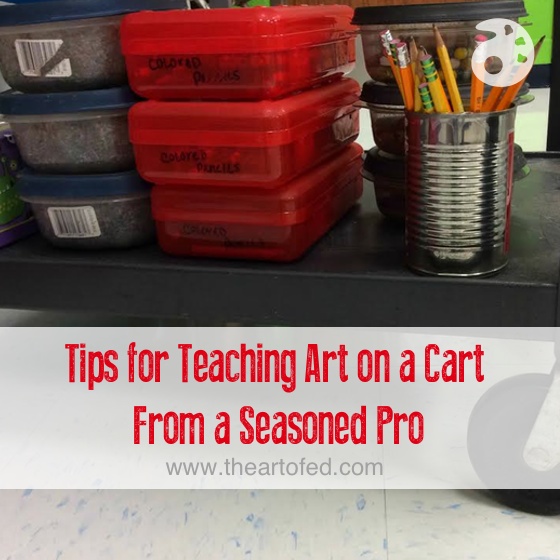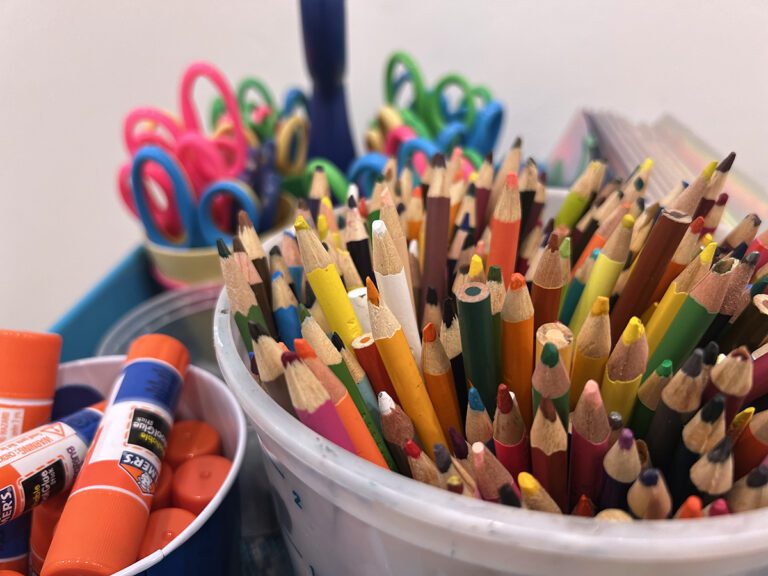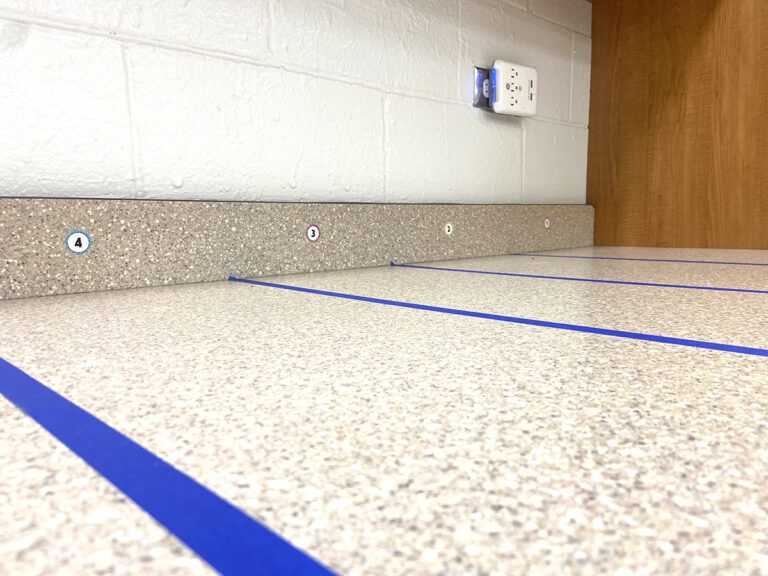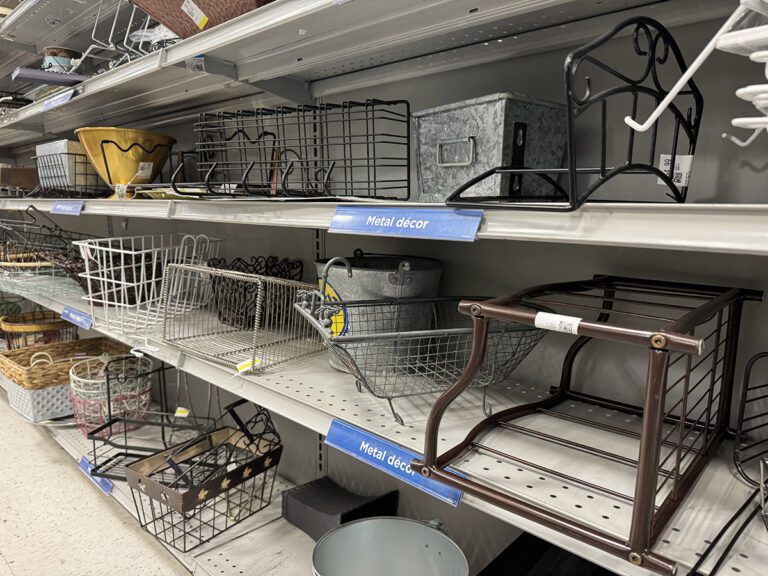Many art teachers take their rooms for granted. However, there are countless art teachers out there that live the nomadic life of teaching art from a cart. For those of you with rooms, the mere thought of art on a cart may be enough to make you shake in your apron. But sometimes, it’s the fear of the unknown that makes us so nervous. Today we’re talking to one art teacher to get the inside scoop on what teaching art on a cart is really like. For those of you on a cart, this is the AOE article you’ve been waiting for! For those of you in a classroom, we hope you gain some valuable insight into the life of a teacher on a cart.
So without further ado, let me introduce Mrs. C from the amazing blog Rainbow Skies and Dragonflies. Mrs. C has taught for 27 years, with many of those being on a cart. Today she shares her experiences as well as some incredibly helpful suggestions. Be sure to stick around to the end for her list of exclusive tips!
AOE’s Exclusive Interview with Mrs. C
1.How did you keep yourself organized while teaching art on a cart?
Staying organized while on a cart is essential to keep your sanity. For me, it was a Herculean task, as creative minds are rarely tidy! First, I organized my cart to be a rolling room. The top was my desk area, lesson plans, handouts, class projects, paper for projects, band-aids, tissues, basket of pens, pencils, and a stapler. The second shelf was other supplies I needed for projects like a class-pack of markers, crayons, and colored pencils as well as activities the kids could choose from if they were done early. The bottom shelf held more supplies, which I changed out with the needs of the project. Any visuals were clipped to the side of my cart for easy access. All supplies were housed in easy-to-carry plastic totes, so the kids could help pass out and collect supplies. I would also choose responsible students to move my cart from one room to the next if I was going to be in the same wing. This way, I would wait for the teacher to return and then simply walk over to my next class.
2. Art on a cart is sometimes viewed in a negative light. What positives have you found when teaching art on a cart?
Teaching from a cart is no picnic by any means. If given a choice, I don’t think anyone in their right mind would choose to teach anything off a cart. That being said, as an educator, I have a duty to my students to give them the best education I can regardless of my situation. There were many times I was glad that my thoughts didn’t appear in word bubbles over my head, but I never let my kids see that I was upset or frazzled. Negative thoughts are destructive, personally and professionally. I decided to look for the positives. I was able to see how every teacher in my building managed their own classrooms, how they interacted with their students and picked up some great classroom management tools along the way. I worked with the homeroom teachers to incorporate art lessons across the curriculum. I started to feel like the eyes and ears of the building. I was able to build a strong connection with the classroom teachers in my building. I think overall it’s a win-win situation when we all work together as a team.
3. Was your curriculum limited by teaching art on a cart? How did you find ways to overcome these limitations?
My curriculum did not change just because I was teaching off a cart. Sometimes logistics or materials of a project would be adjusted to be able to better fit the situation I was in. It was impossible to do clay projects going from class to class, so for a while I switched from air dry clay to Model Magic. By switching materials I was able to have the kids work with clay without the mess. The teachers were very good about letting me store the projects in their classrooms if needed. Another limitation was that some teachers had their rooms set up with rows and some had group arrangements. The rooms with groups were easiest to work with for setting up supplies. When they were in rows the kids had to share supplies from the left and the right. During my last stint on the cart I decided that I was going to continue to do what I always did in the classroom and was determined to figure out how to do it, and I did. My fellow teachers were all very supportive and let me bring the messiest supplies into their spaces without complaint. They always asked if there was anything I needed. Paintings and projects were frequently seen lined up in the hallway drying!
4. What advice can you share with teachers who are faced with teaching art on a cart?
I think the best advice I can give someone who finds themselves teaching off a cart is to stop and breathe. Take time to think out the situation. Figure out a plan of action that is going to work for you. Initially, you will want to cry and panic when your administrator tells you that your room is gone. Try to keep a positive mindset . Trust me, there will be days that you are frustrated and miserable with your situation but just stop, take a minute and breathe.
5. How did teaching art on a cart change you as a teacher?
Having to teach off of a cart has taught me that, if nothing else, I am resilient. I had to think on my feet many times. I learned to adapt to my situation so that I could move forward. Even during the times I wanted to say, “Forget it, I can’t do this anymore,” I would stop, breathe, pick myself up, and continue because in a room down the hall there was a class of children eagerly waiting for me to walk in. So I did, with a smile.
Thank you so much for sharing your insight into a tricky teaching situation, Mrs. C! Read on for some top tips to keep in mind if you’re in a similar situation!
Mrs. C’s Top 6 Tips for Teaching Art on a Cart
1. Be as organized as you possibly can!
Even on days when I felt like collapsing and just running out the door at the end of the day I made sure everything was where it belonged and got things ready for the next day.
2. Befriend the custodians!
You are going to need their help and support for many things.
3. Think on your feet.
There is always the opportunity for something to go wrong even with all your planning.
4. Keep a big roll of paper towels on every cart.
I would wet paper towels in the clean water for hands since the school had no running water in the rooms. If I needed clean water in an emergency we would get it from a water fountain in the hallway.
5. Enlist helpers to move things from room to room.
I would always pick students to help me push a cart or carry a box or help collect dry pictures from the hall. The students are always eager to help. Their help is huge when your time is limited.
6. Smile!
I know it is not always easy but I always find you are better off in the end. I had no travel time built into my schedule, and at times, would have to race from across the building to get to a class. I would always come in with a smile (sweaty, but with a smile). I never wanted the kids to see me aggravated. No one likes a miserable art teacher!
Teachers on a cart, tell us- what did we miss? What is your most helpful tip for teaching from a cart?
What would you say are the pros and cons of your situation?
Magazine articles and podcasts are opinions of professional education contributors and do not necessarily represent the position of the Art of Education University (AOEU) or its academic offerings. Contributors use terms in the way they are most often talked about in the scope of their educational experiences.






